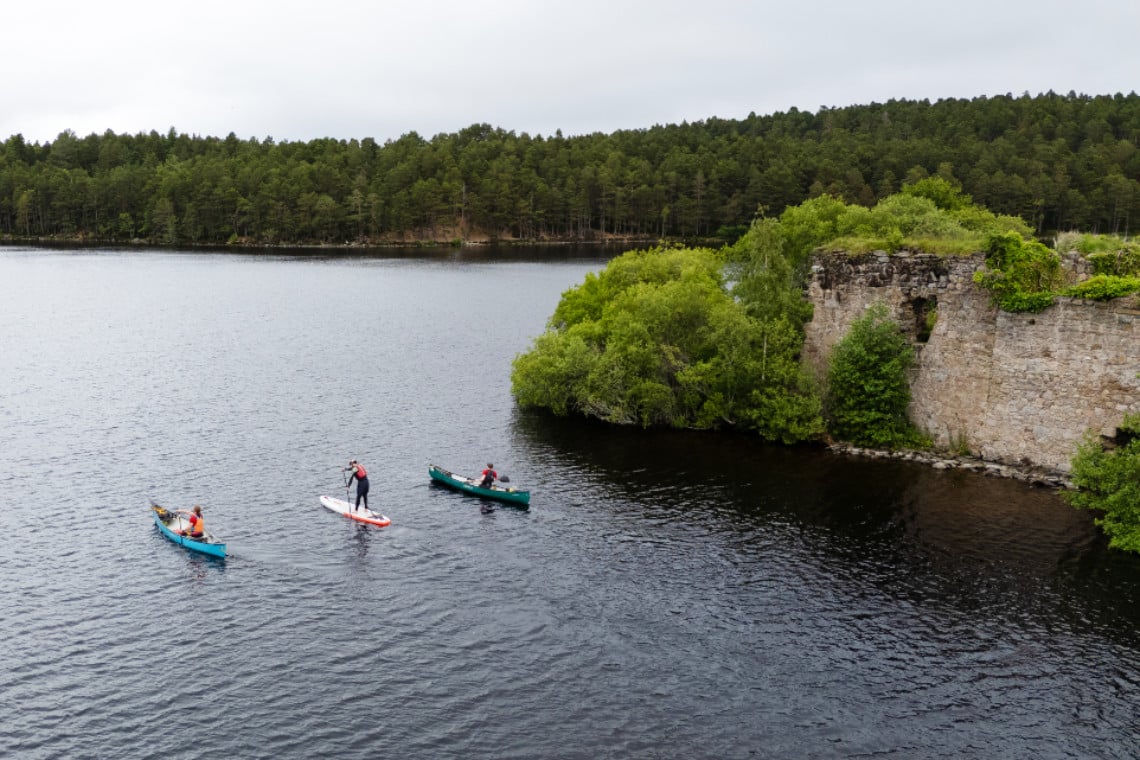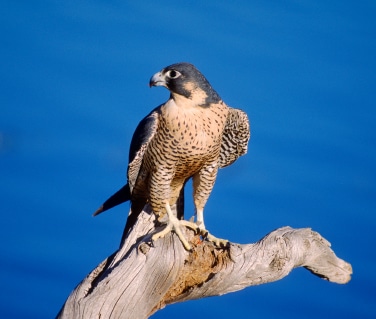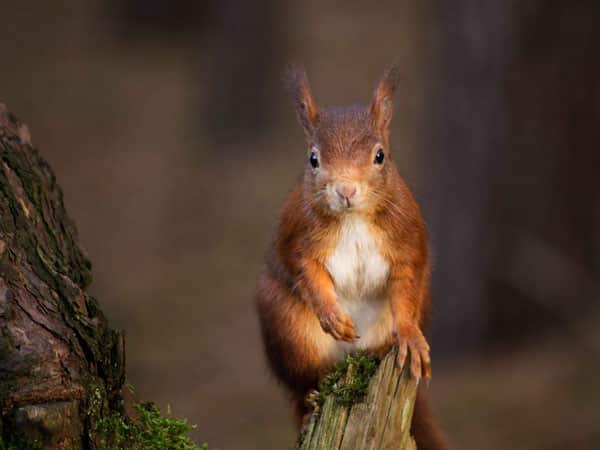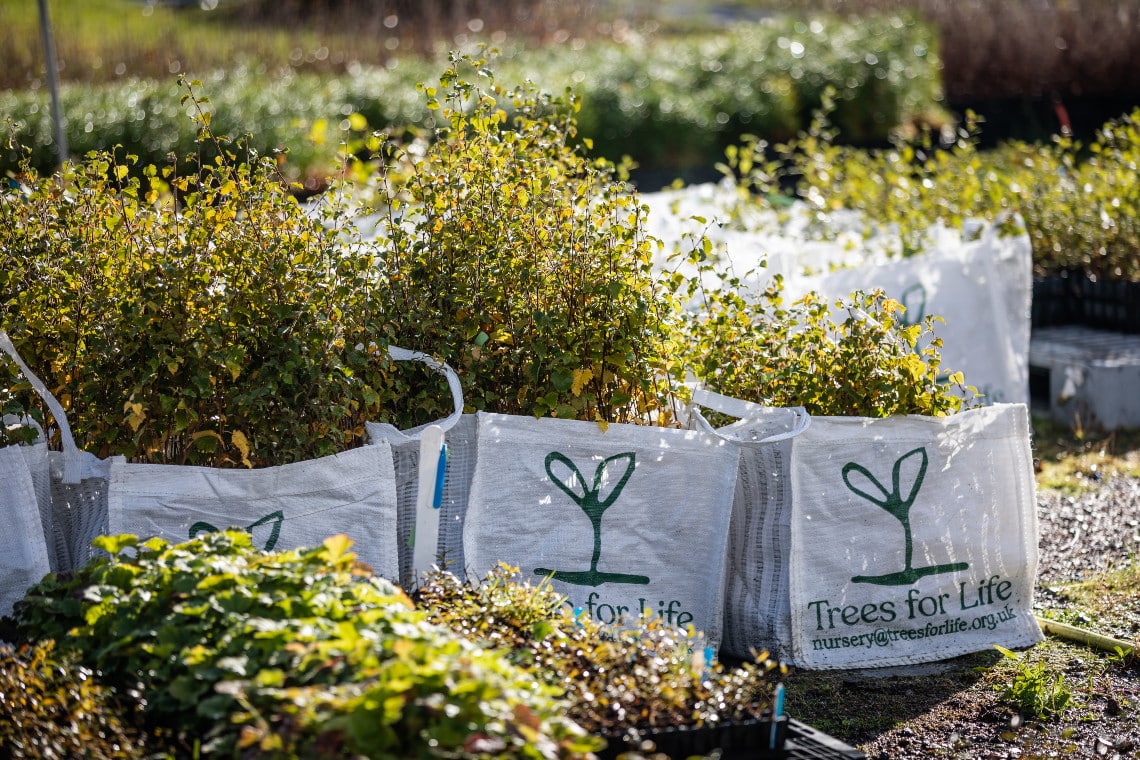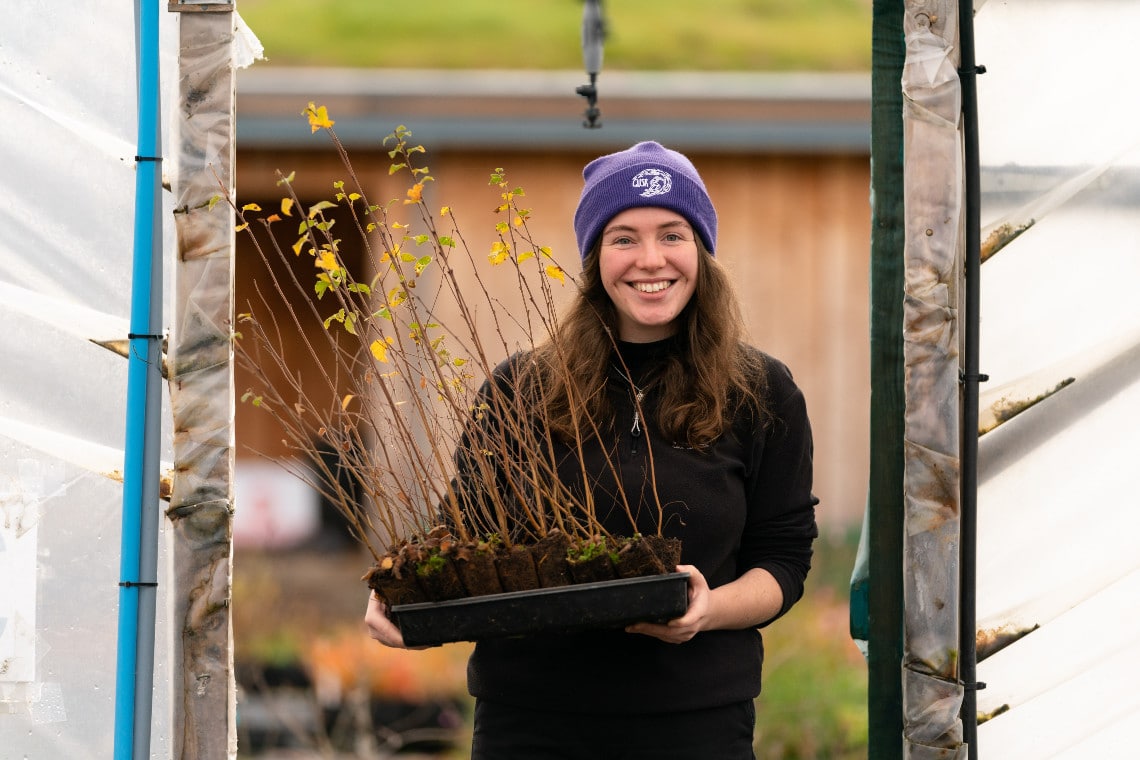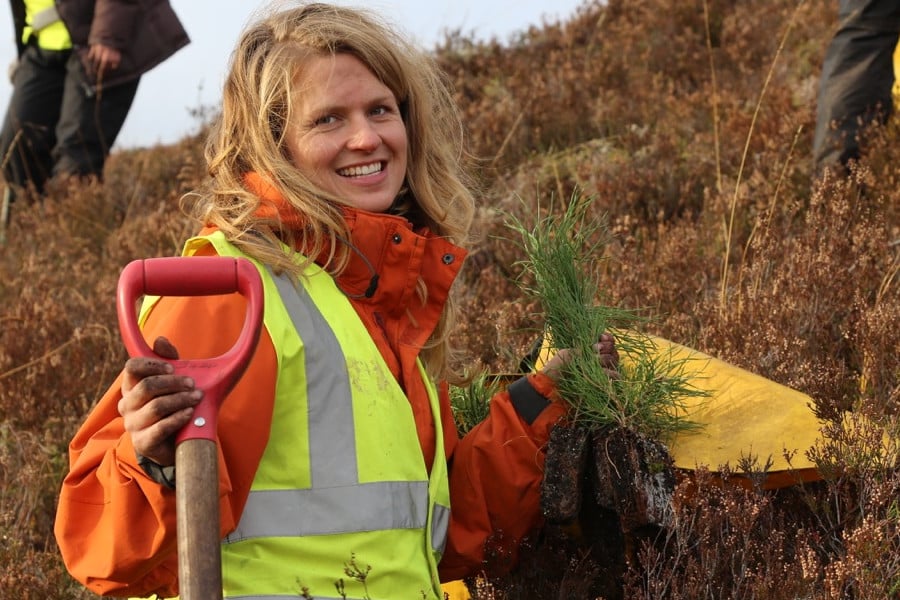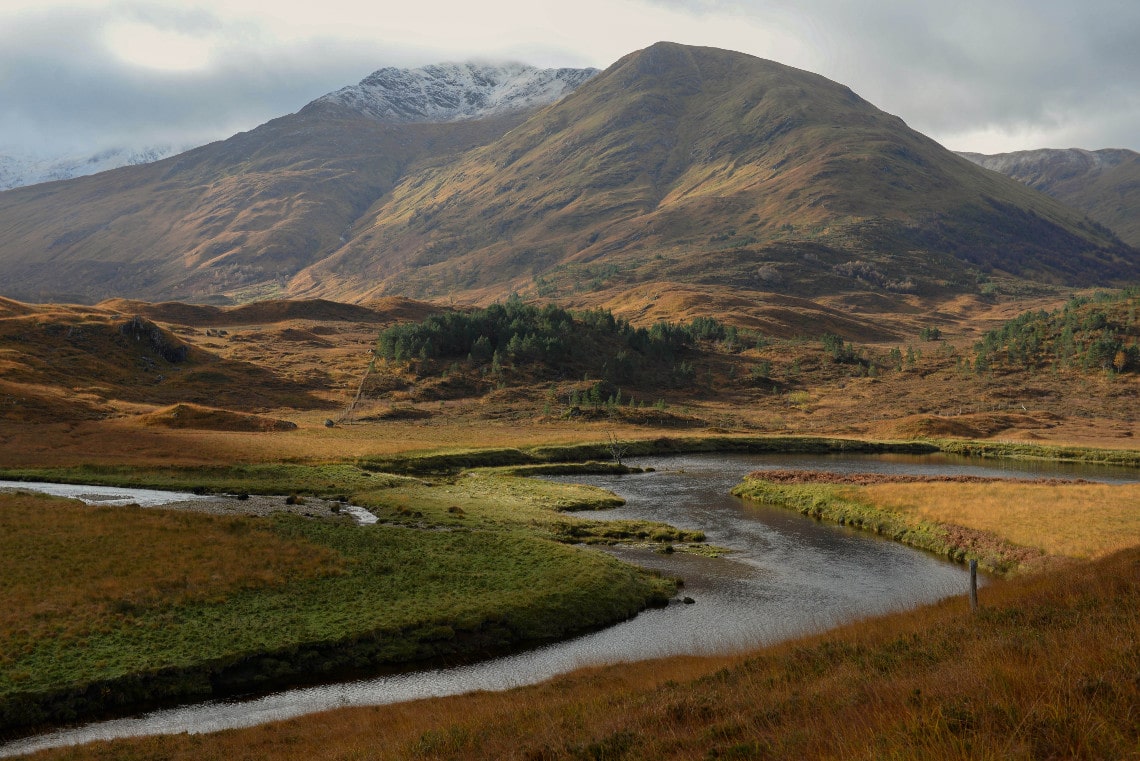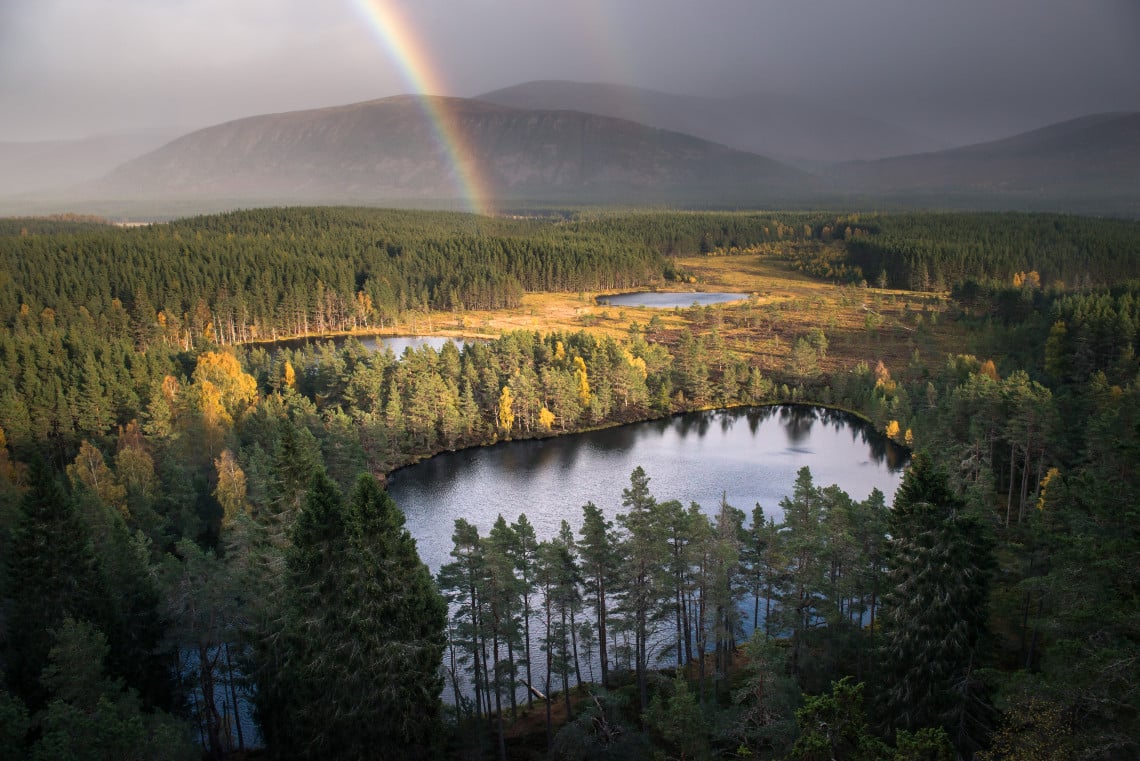
Nestled in the heart of the Scottish Highlands, the Badenoch area is a treasure trove of history, heritage, and natural beauty. This region, centred around the upper reaches of the River Spey, offers a unique glimpse into Scotland’s past and its vibrant natural world. It also happens to be our place of work, which is rather fortunate!
A Glimpse into the history of Badenoch
Badenoch, meaning “the drowned land” in Gaelic, has a rich history shaped by its geographical features. When you see the flood plains around the river after a lot of rain, you will be able to understand where ‘the drowned land’ comes from! The area was once inhabited by the Picts, as evidenced by place names with Pictish origins. Over the centuries, it became the homeland of the Clan Chattan Confederation, particularly Clan MacPherson.
One of the most notable historical figures associated with Badenoch is Alexander Stewart, the infamous “Wolf of Badenoch,” who was granted the lands in the 14th century. Legend has it that the ‘Wolf of Badenoch’ spent his final days on the tiny island of lovely Loch an Eilein (Rothiemurchus). Although an idyllic place he was a lonely man and accepted the challenge of a stranger who asked him for a game of chess. This would turn out to be the last game of chess the Wolf of Badenoch ever played! You can see the island on one of our guided canoe trips – find out more here.
Wildlife
Badenoch, located within the Cairngorms National Park, is a haven for wildlife enthusiasts and if you’re lucky you might come across some of the following:
Red Deer: there are a lot of red deer in Scotland (too many some might say), but you can never fail to be impressed when you see them. They are particularly impressive when you see the males competing for the top spot at rutting time – the time of year when they compete for job as ‘dad-to-be’ for next season’s fauns!
Scottish Wildcats: One of Britain’s most endangered mammals, these elusive creatures are slightly larger than domestic cats and have a bushy tail and thick coat1. Over the years their numbers dropped significantly as they inter-bred with domestic cats. However, their number is growing slowly again thanks to conservation projects underway.
Capercaillie: These large woodland grouse are found in the impressive Caledonian pine forests and are a focus of significant conservation efforts. You would be very lucky to see one of these birds. During breeding season, the males gather at a ‘Leck’ where they will fight other males to take the crown as boss-bird! These fights can get really serious.
Red Squirrels: These charming creatures are commonly seen in the area, particularly in the pinewoods. Unfortunately, the non-native grey squirrels are much more common in other areas of the UK, but the reds still rule in the Badenoch area. One of my favourite animals
Birds of Prey: Including ospreys, golden eagles, and peregrine falcons, which can be spotted soaring above the landscape. Look out for Ospreys fishing at Rothiemurchus or Boat of Garten – very cool to see these awesome birds hunting for their dinner.
Conservation Projects
Badenoch is home to several important conservation projects aimed at preserving its unique biodiversity. Pressures of climate change, industry, tourism, invasive species and other issues have taken their toll on the area over decades. The following projects are great examples of what can be done to help reverse the damage done.
Saving Wildcats Project: Led by the Royal Zoological Society of Scotland (RZSS), this project aims to breed and release Scottish wildcats back into the wild.
Capercaillie Emergency Plan: This plan focuses on habitat expansion, predator control, and reducing human disturbance to help recover the capercaillie population.
Glenfeshie Estate: A rewilding project that aims to restore natural habitats by reducing deer numbers and allowing native woodland to regenerate.
Local Industry
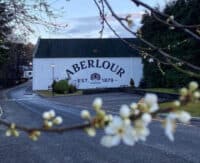 The economy of Badenoch is diverse, with key sectors including:
The economy of Badenoch is diverse, with key sectors including:
Tourism: The natural beauty and outdoor activities in the Cairngorms National Park attract many visitors, supporting local businesses such as hotels, restaurants, and outdoor adventure companies. (This includes us!)
Agriculture: Farming remains a significant industry, with sheep and cattle farming being predominant. The fertile land also supports crop farming.
Crafts and Artisans: Local craftspeople, like “Wooden Tom,” create unique items from locally sourced materials, contributing to the area’s cultural heritage.
Don’t forget that Speyside is the home of dozens of whisky distilleries (and gin too these days). Well, with all that water, you need something to go with it, don’t you??
Tourism can have both positive and negative impacts on conservation efforts
Here’s a closer look at how tourism influences conservation, particularly in areas like Badenoch:
Positive Impacts
1. Funding for Conservation Projects: Tourism generates revenue that can be reinvested into conservation projects. Entrance fees, guided tours, and eco-friendly accommodations often contribute directly to funding wildlife protection and habitat restoration.
2. Awareness and Education: Tourists often leave with a greater appreciation for nature and the importance of conservation. This heightened awareness can lead to increased support for conservation initiatives both locally and globally.
3. Economic Incentives: Local communities benefit economically from tourism, which can reduce reliance on activities that harm the environment, such as logging or poaching.
Negative Impacts
1. Environmental Degradation: High volumes of tourists can lead to habitat destruction, pollution, and increased waste. This can negatively affect local wildlife and ecosystems.
2. Disturbance to Wildlife: Increased human presence (e.g. with their dogs) can disturb wildlife, leading to changes in animal behaviour and even displacement from their natural habitats.
3. Strain on Resources: Tourism can put a strain on local resources, such as water and energy, which can impact both the environment and local communities.
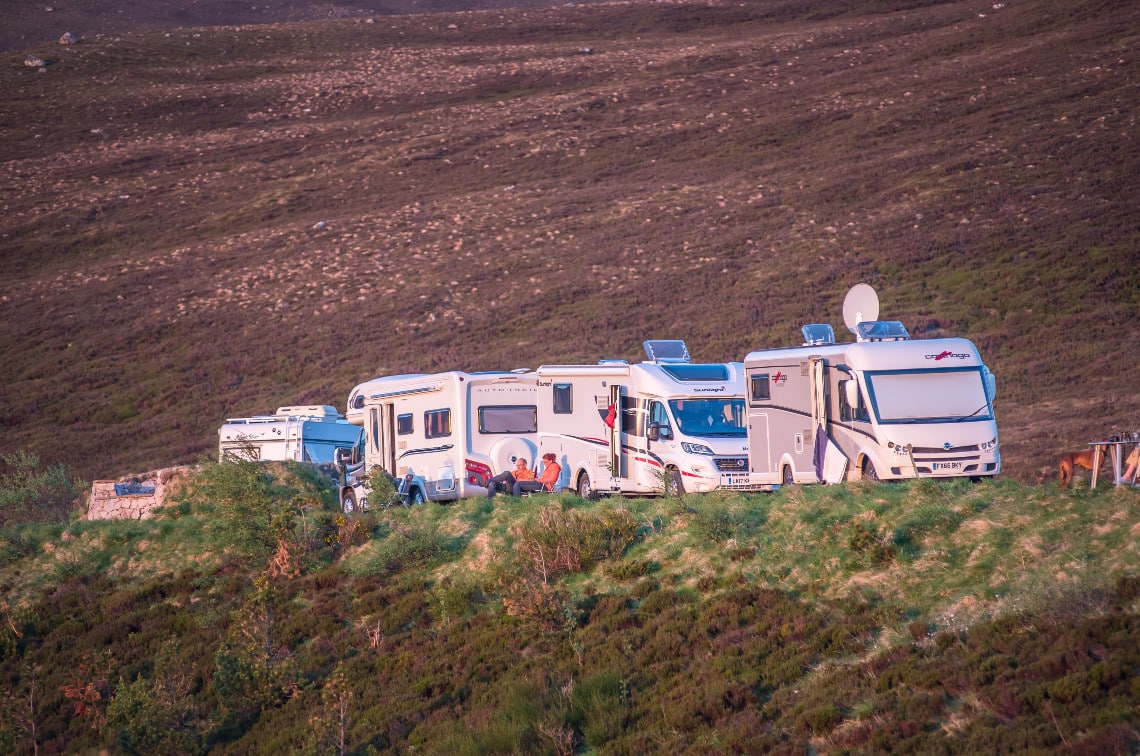
Balancing Tourism and Conservation
To help reduce or mitigate the negative impacts of tourism and enhance the positive ones, sustainable tourism practices are essential if conservation efforts are to succeed. This may include:
Implementing ‘Carrying Capacity Limits’: Simply put this means restricting the number of visitors to sensitive areas to prevent overuse and degradation. Often difficult to enforce in Scotland with it’s liberal Outdoor Access Code.
Promoting Eco-friendly Practices: Encouraging tourists to follow guidelines that minimize their environmental footprint, such as using reusable water bottles and staying on designated paths e.g. The Cairngorms National Park Sustainable Tourism Project.
Community Involvement: Engaging local communities in tourism planning and conservation efforts ensures that they benefit economically while also protecting their natural heritage.
In Badenoch, initiatives like the Saving Wildcats Project and the Capercaillie Emergency Plan are examples of how tourism revenue can support vital conservation work. By fostering a balance between tourism and conservation, regions like Badenoch can protect their unique wildlife and habitats for future generations to come.
Badenoch’s blend of rich wildlife, dedicated conservation efforts, and vibrant local industry makes it a unique and fascinating region to visit. You can walk, paddle, climb, bike, watch nature, drink whisky, eat nice local produce or just stand back and take in the awesome views! Come and see for yourself!
